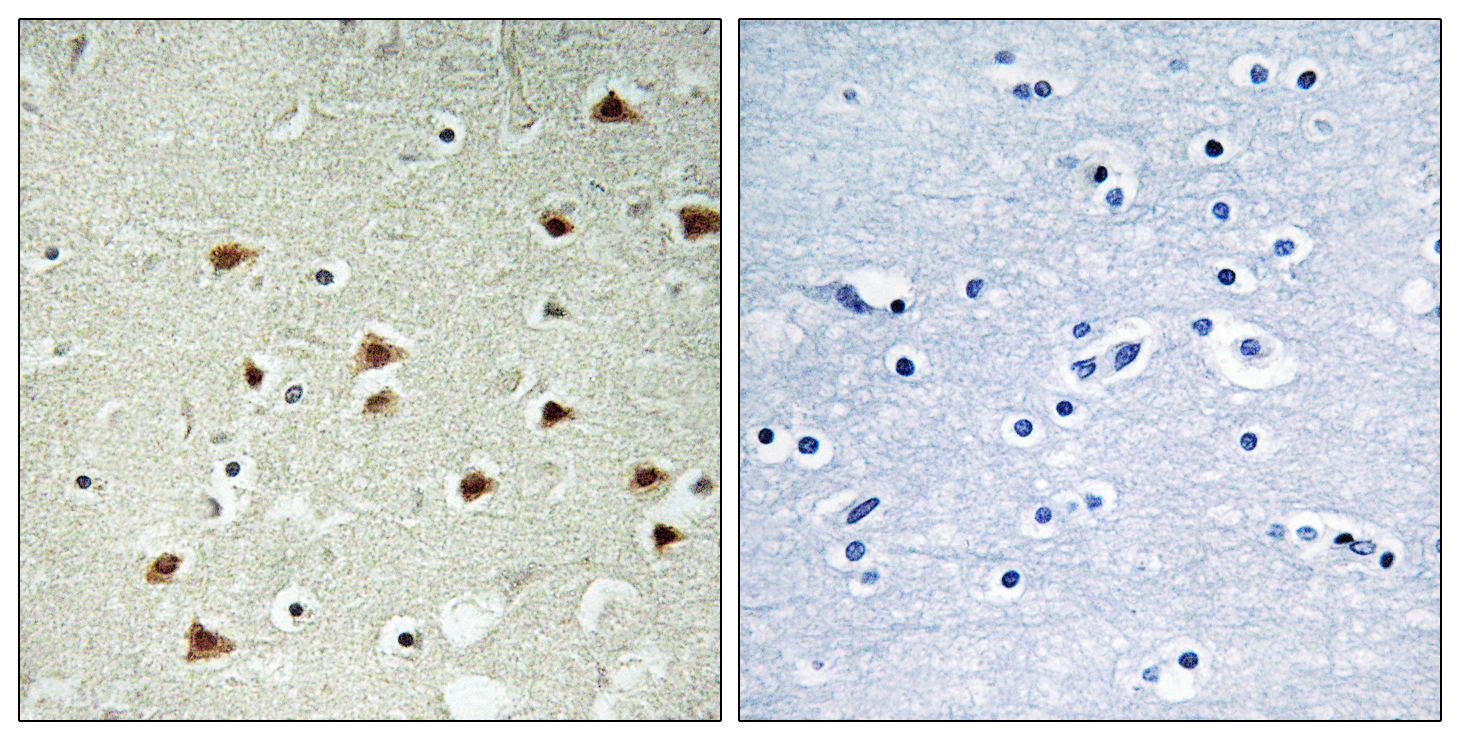ABHD14B Polyclonal Antibody
- 货号:YT0058
- 应用:IHC;IF;ELISA
- 种属:Human;Rat
- 蛋白名称:
- Abhydrolase domain-containing protein 14B
- 免疫原:
- The antiserum was produced against synthesized peptide derived from human ABHD14B. AA range:161-210
- 特异性:
- ABHD14B Polyclonal Antibody detects endogenous levels of ABHD14B protein.
- 组成:
- Liquid in PBS containing 50% glycerol, 0.5% BSA and 0.02% sodium azide.
- 来源:
- Polyclonal, Rabbit,IgG
- 稀释:
- IHC 1:100 - 1:300. ELISA: 1:40000.. IF 1:50-200
- 纯化工艺:
- The antibody was affinity-purified from rabbit antiserum by affinity-chromatography using epitope-specific immunogen.
- 储存:
- -15°C to -25°C/1 year(Do not lower than -25°C)
- 其他名称:
- ABHD14B;CIB;Abhydrolase domain-containing protein 14B;CCG1-interacting factor B
- 背景:
- function:Has hydrolase activity towards p-nitrophenyl butyrate (in vitro). May activate transcription.,similarity:Belongs to the AB hydrolase superfamily. ABHD14 family.,subcellular location:Predominantly cytoplasmic.,subunit:May interact with TAF1.,tissue specificity:Ubiquitous. Detected in spleen, thymus, prostate, testis, ovary, small intestine, colon, peripheral blood leukocyte, heart, placenta, lung, liver, skeletal muscle, pancreas and kidney.,
- 功能:
- function:Has hydrolase activity towards p-nitrophenyl butyrate (in vitro). May activate transcription.,similarity:Belongs to the AB hydrolase superfamily. ABHD14 family.,subcellular location:Predominantly cytoplasmic.,subunit:May interact with TAF1.,tissue specificity:Ubiquitous. Detected in spleen, thymus, prostate, testis, ovary, small intestine, colon, peripheral blood leukocyte, heart, placenta, lung, liver, skeletal muscle, pancreas and kidney.,
- 细胞定位:
- Cytoplasm . Nucleus . Predominantly cytoplasmic. .
- 组织表达:
- Ubiquitous (PubMed:14672934). Detected in spleen, thymus, prostate, testis, ovary, small intestine, colon, peripheral blood leukocyte, heart, placenta, lung, liver, skeletal muscle, pancreas and kidney (PubMed:14672934).

- Immunohistochemistry analysis of paraffin-embedded human brain tissue, using ABHD14B Antibody. The picture on the right is blocked with the synthesized peptide.




